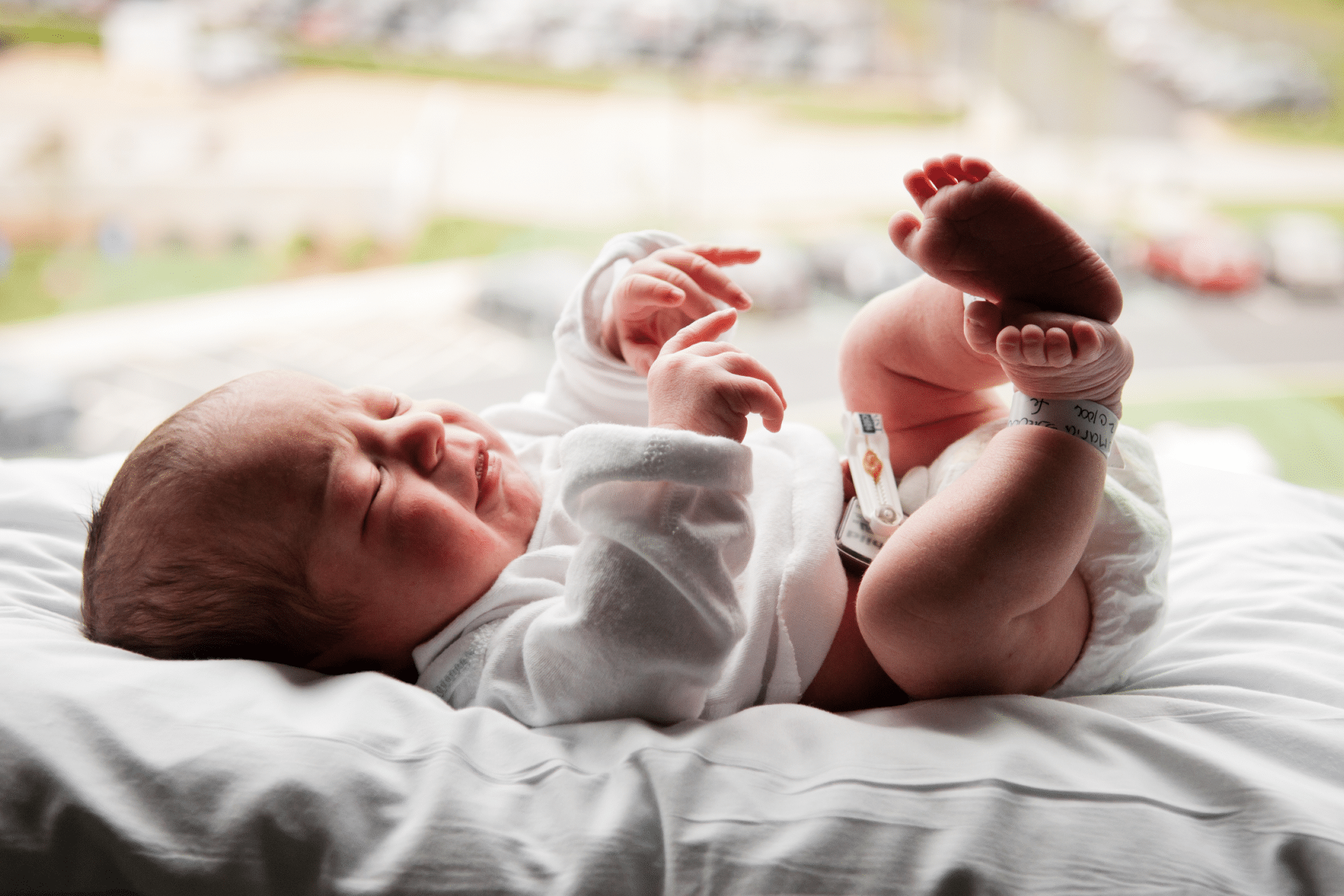Baby
5 min Read
How To Care For Baby’s Umbilical Cord And Belly Button

January 31, 2021
Baby
5 min Read

January 31, 2021

As if new parents didn’t have enough to worry about—feedings, sleepless nights, fussy babies—you also have to worry about the umbilical cord healing properly. For new parents, this is uncharted territory. Not to worry, pediatric nurse practitioner Tracy Burton is here to help.
First off, there are no pain-sensitive nerve fibres in the umbilical cord, so your baby won’t feel any pain when the cord is cut. No worries there. It also doesn’t hurt when the remaining cord stub falls off about one to three weeks later. Once this happens, Tracy says the cord can be discarded like any other “biowaste product”—tucked in a diaper or flushed down the toilet.
Tracy says it’s important to keep the cord dry and clean. “Pediatricians used to recommend cleaning the base of the umbilical cord with rubbing alcohol, however, it is no longer recommended since it can irritate the skin and even delay healing.” Instead, she recommends cleaning the area with water and mild soap before gently patting it dry with a soft, clean cloth.
To avoid irritation, wet or soiled diapers need to be changed quickly and the upper flap of the diaper should be folded down to leave the cord uncovered. Exposing the stump to the air will also help it dry out.
“This is normal and as long as you keep the area clean and dry, there should be no problem,” says Tracy. The umbilical stump will change from yellow-brown to black as it dries out. Once it falls off, there might be a small pink area in your baby’s belly button. According to Tracy, this is normal and new skin will soon grow over the spot.
Dried blood or a little crusting can be expected on any umbilical stump, so there’s no cause for alarm. Visit your doctor if your baby has a fever or isn’t feeding well, Tracy says. Redness, tenderness and swelling around the cord, as well as bleeding or a foul-smelling pustulent discharge, are further signs of an infection.
Katey Trevaskis learned about belly button infections when her daughter Rylee’s umbilical cord took eight weeks to fall off.
She first realized there was a problem when the cord wasn’t drying up. Five weeks after the birth, Katey also discovered pus on the underside of the umbilical cord. Though she was concerned at first, Katey learned that the situation wasn’t life-threatening. A doctor prescribed antibiotics and the infection cleared up within two weeks.
The best thing to do at first is wait, then seek a doctor if anything seems abnormal, Katey says. “Be patient! It will eventually fall off. But keep an eye out for infection.”
Tracy says no, it’s best to be patient and wait for it to fall off naturally. If the cord gets caught on something and is pulled off, don’t sweat it. Unless there is bleeding, your baby should be fine. If the cord does come off early, Tracy says the umbilical area should be kept clean and dry until it heals completely.
While they’re not super common, here are some complications that can come up as the umbilical cord is healing:
Hernias can occur when there is a weakness in the abdominal muscles. A loop of the intestine pushes through the weakness and protrudes under the skin as a soft bulge.
Babies can develop umbilical hernias, especially if they are born prematurely or with a low birth weight. During pregnancy, the umbilical cord feeds through a gap in the baby’s abdominal muscles. Normally this gap closes as the baby matures after birth. If the gap does not close, a portion of the intestine, fat or fluid can push into the gap between the muscles, causing a hernia. Tracy says that most hernias resolve themselves within three to four years and are usually painless. Complications are rare, though you should see a doctor if the hernia is painful, is unusually large or has not resolved by the age of four.
In simple terms, omphalitis is a belly button infection. Signs and symptoms include poor feeding, fever, redness, warmth, foul-smelling discharge as well as swelling or tenderness of the skin around the cord. “Seek urgent medical attention if you notice any of these symptoms as the umbilical stump may be infected and will require treatment with antibiotics,” Tracy says.
These result from an overgrowth of tissue during the healing process. “It appears as a soft pink or red lump and often leaks small amounts of clear or yellow fluid,” Tracy says. Unlike with omphalitis, there is seldom fever, redness, warmth, swelling or tenderness associated with umbilical granulomas. A doctor may use “silver nitrate to dry up the tissue at the base of the stump, allowing normal skin to grow over,” says Tracy. Don’t worry, this treatment won’t hurt your babe!
Originally published in ParentsCanada magazine, October 2014.